Why does Britain seem to hate America’s favourite landscape artist?
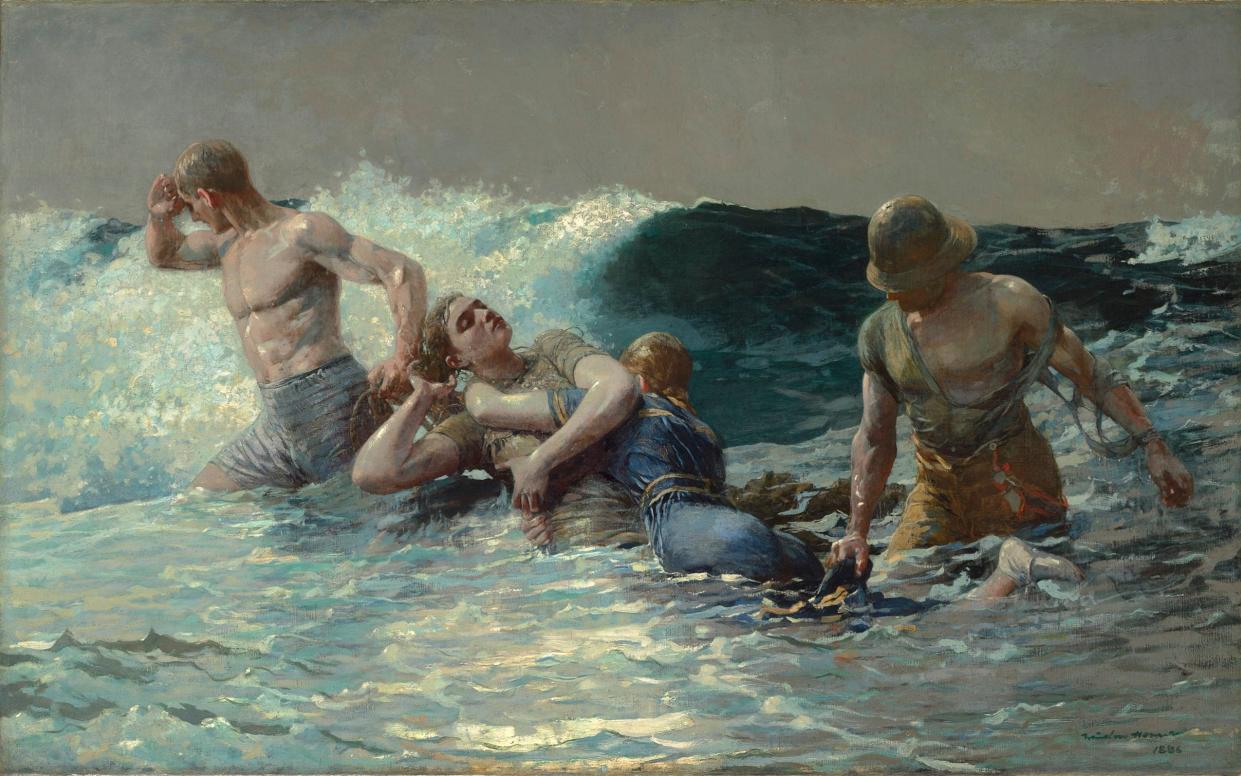
- Oops!Something went wrong.Please try again later.
An afternoon fog has settled on New England’s coast, and a weak, white sun is struggling to illuminate the peninsula of Prouts Neck, in Maine. Beyond an outcrop of dark rock as thick as a castle’s wall, a keeplike structure with a prominent balcony is silhouetted against the blank sky.
For more than a quarter of a century, the distinctive building in this picture was the home and studio of the reclusive American painter Winslow Homer (1836-1910), whom the National Gallery is about to celebrate with an exhibition of around 50 paintings. And according to the art historian Simon Schama, Homer’s “eerie” view of it, The Artist’s Studio in an Afternoon Fog (1894), is the closest to self-portraiture that this taciturn loner ever came.
Winslow who? If the name only summons in your mind a half-formed impression of his work, don’t beat yourself up: although Homer is beloved in his homeland, in this country he has languished in a sort of limbo. Indeed, that view of his studio shrouded in fog is a metaphor for his reception on this side of the pond – ever since 1878, when one of his pictures, The Cotton Pickers (1876), was first exhibited on these shores, and a careless cataloguer at the Royal Academy misidentified him as “W Horner”. A few years later, a British critic called him “Winslow Herron”.
The fact that there isn’t a single painting by Homer in a public collection here may, in part, explain this invisibility. Still, our museums are hardly awash with pictures by Edward Hopper – and what gallery-goer in Britain isn’t familiar with his realistic urban scenes of modern alienation?
Even an excellent 2006 exhibition at Dulwich Picture Gallery, Winslow Homer: Poet of the Sea, couldn’t shift the dial. Its then-director, Ian Dejardin, suggested that the artist’s low profile in Europe was “astonishing, almost perverse”. Yet 16 years later, Homer is still “largely unknown” in Britain, says the National Gallery’s director, Gabriele Finaldi.
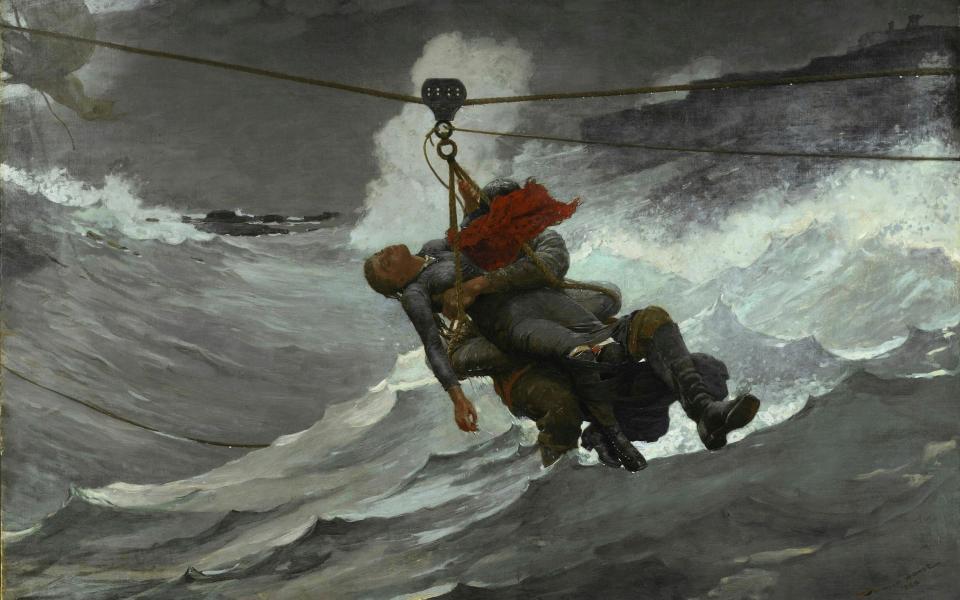
It’s odd, and not only because, in America, Homer really is a household name. During his lifetime, he established himself as a quintessentially American painter, whose straightforward, unsentimental compositions were praised by Henry James in 1875 as “vivid” and “manly”. By his death in 1910, Homer was perhaps the most celebrated artist in America – and, says Chris Riopelle, co-curator of the National Gallery’s exhibition, which opens next month following a stint at New York’s Metropolitan Museum of Art, “his fame just grew from there. If you have any claims to visual literacy in the States, then you know Homer very well.”
Britain’s indifference to Homer is even stranger when you consider this biographical fact: in the early 1880s, long after he’d established himself as a painter, he decided to visit England and ended up in a tiny Northumbrian fishing village, where he stayed for more than 18 months. Even for scholars of his art who have no skin in the game of promoting it over here, this salt-wracked sojourn in Cullercoats, by the mouth of the River Tyne, a mile or so south of Whitley Bay on the North Sea, was – genuinely – a crux in his career, ushering in the grand, monumental vision of his later work for which he is most acclaimed. They say it’s grim up north, but something about the austere existence of those pre-industrial fisherfolk, in thrall to the mercurial whims of a merciless sea, moved Homer profoundly.
Before his trip to Northumberland, this self-taught son of a hardware merchant, who’d made his name during the 1860s as an artist-correspondent chronicling the Civil War, was still painting jolly scenes of everyday life in the post-conflict period of Reconstruction: boisterous, barefoot lads engaged in rough-and-tumble farmyard games; elegant ladies in crinolines enjoying a spot of croquet on a lawn; a sleek sailing boat chopping through a harbour in Massachusetts under, as the title puts it, “a fair wind”.
Afterwards, though, Homer’s fair-weather art darkened and grew more serious and squally, as he became attuned to nature’s destructive might. For subject matter, he turned to gales and great crashing waves, as well as moments of hazard, from which he did not deviate until his death. Within a year of his return to America, he’d moved from New York to Prouts Neck, where, as he had done in Cullercoats, he could overlook the ocean.
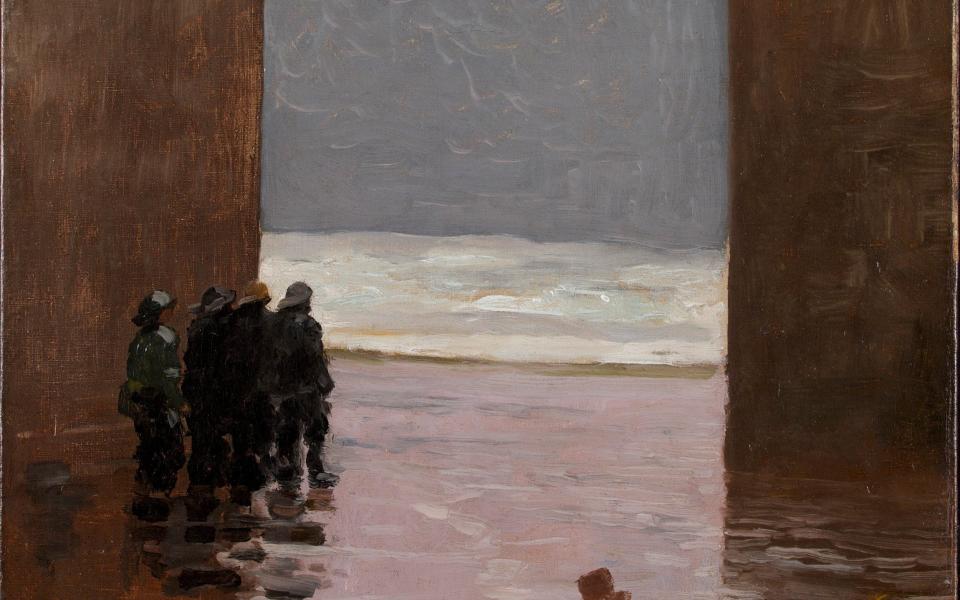
Why Cullercoats? To answer this, we need to go back to the 1870s, when Homer was already looking for a change in his art – and his interest in the sea was swelling, as suggested by that 1873-76 picture of a sailing boat, Breezing Up (A Fair Wind). He was thinking increasingly about J M W Turner, that briny master of marine painting, then considered Britain’s finest painter, whose work was the talk of avant-garde circles in America.
In 1872, for instance, the American businessman and collector John Taylor Johnston, who already owned Homer’s most famous Civil War canvas, Prisoners from the Front (1866), acquired, from the art critic John Ruskin, Turner’s harrowing Slave Ship, of 1840, which is now in Boston – and we know that Homer was present on the evening Johnston unveiled it in New York.
On March 15 1881, Homer set sail aboard the SS Parthia, bound for Liverpool. From there, he made his way to London, but he only stayed for a week – finding time to execute just one atmospheric watercolour of the Palace of Westminster beneath a red moon – before travelling on to Cullercoats.
As destinations go, a tiny settlement above Newcastle upon Tyne, albeit one with picturesque views across the bay to the ruins of Tynemouth Priory, may sound a little random for an artist from another continent. There’s even a story – which Riopelle discounts – that Homer only heard about the seaside village for the first time on his voyage over. In fact, Cullercoats was already something of a tourist destination, as well as a colony for artists with one eye on a market for scenes of simple fisherfolk. The English painter Frank Holl, for instance, had produced No Tidings from the Sea (1870) after a holiday there.
Homer, a lifelong bachelor, only intended to stay for six months, but lingered longer. It was a remarkably fruitful period. He started at least seven oil paintings, including Hark! The Lark (1882) – its title lifted from Shakespeare’s Cymbeline – which depicts a frieze-like group of three young women, laden with baskets and netting, suspending their labours to listen to a songbird. Two decades later, Homer described it as “the most important picture I ever painted, and the very best one”. He also produced about 150 brilliant sketches and watercolours – a store of imagery that, Riopelle explains, he could draw upon “for years and years afterwards”, long after he departed for America on November 11 1882.
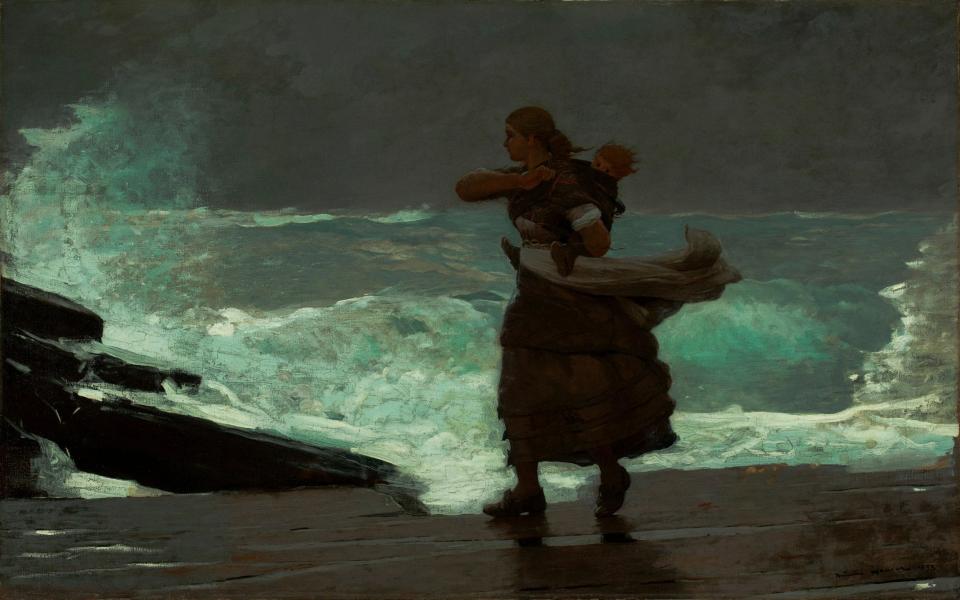
The village’s robust young working girls and fishwives, with their distinctive aproned costumes, clearly caught his eye. These “mackerel-whiffing Penelopes”, as Schama memorably calls them, are the focus of many of Homer’s watercolours: hauling heavy baskets of plaice and pollock; gathering mussels or baiting lines and mending nets; gazing mournfully out from shores and clifftops, wrapped in thick fringed shawls.
The National Gallery’s catalogue reproduces two photographs recording the appearance of his favourite model, a blue-eyed teenager called Maggie Jefferson, whom he paid a shilling a sitting. In The Gale (1883-93), acclaimed, in 1916, as “the climax of the painter’s achievements”, a statuesque young mother, a babe strapped to her back, appears isolated on a stagelike strip of sodden rock before a backdrop of angry breakers, battered by the elements but as monumental as any figure from the Parthenon’s pediments at the British Museum, which we know Homer visited.
He was obsessed, too, with the local life-saving brigade, and whenever an alarm was raised, no matter the hour, he would make haste to sketch the villagers in oilskins and long-brimmed sou’westers risking their lives for those in peril on the sea. In 1881, for instance, he witnessed hundreds of villagers acting together to rescue passengers and crew from the foundering Iron Crown, which had been driven by a storm onto the shoals near Tynemouth – the event inspired his most ambitious Cullercoats watercolour. The ferocity of its spuming sea foreshadows Homer’s famous late Maine seascapes such as Northeaster (1895), while the marine-rescue theme anticipates his dramatic masterpieces of the 1880s, The Life Line and Undertow.
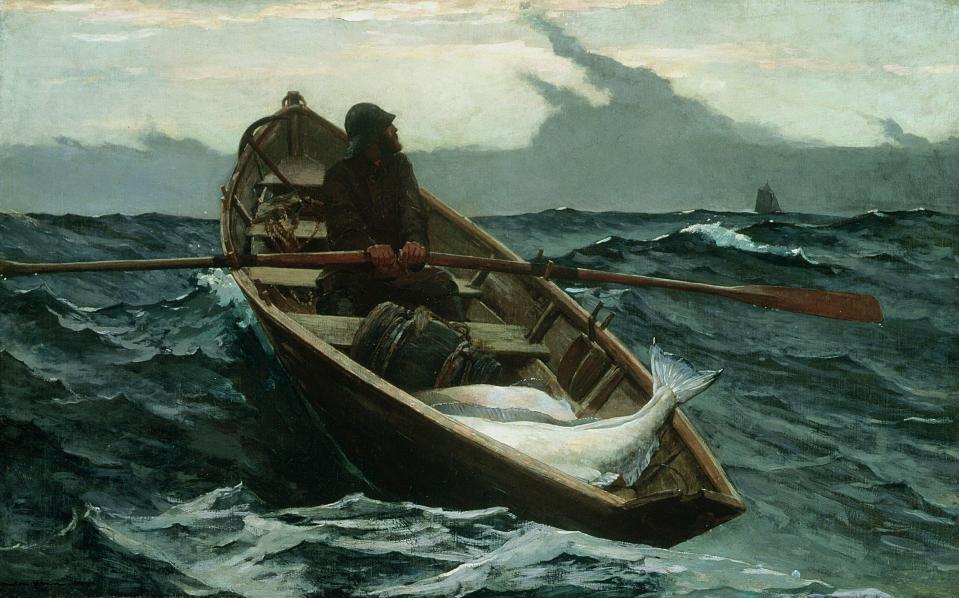
In short, Britain unleashed something epic within Homer – so why isn’t he better known over here? “Part of it,” says Riopelle, “lies in the fact that he was collected so rapaciously by Americans right from the beginning: very little [of his work] came abroad.” But perhaps, too, says Riopelle, “he was not needed in this country” as he was in America.
In Britain, he explains, “there is a great tradition of landscape painting – of seascape painting – which is arguably the epitome of 19th-century British art. And so, given the strength of Turner, Constable, etc, he isn’t a necessary figure for the Brits in the way he is for Americans,” who value Homer for “finally describing America” without recourse to the conventions of European painting. “There’s a sense of Homer putting himself in danger, of getting right into these chaotic, stormy landscapes. And that you-are-there quality to his works has, I think, always resonated very deeply in America. During the age of [the American essayist Ralph Waldo] Emerson, the era of self-reliance in American thought, Homer was the epitome of the self-reliant Yankee.”
I think there’s something to this argument – but not “needing” Homer doesn’t mean we should snub him. At last, thanks to the National Gallery’s show, we can not only make his acquaintance, but also succumb to the surging, foam-flecked power of his art.
Winslow Homer: Force of Nature is at the National Gallery, London WC2 (nationalgallery.org.uk) from Sept 10 to Jan 8

